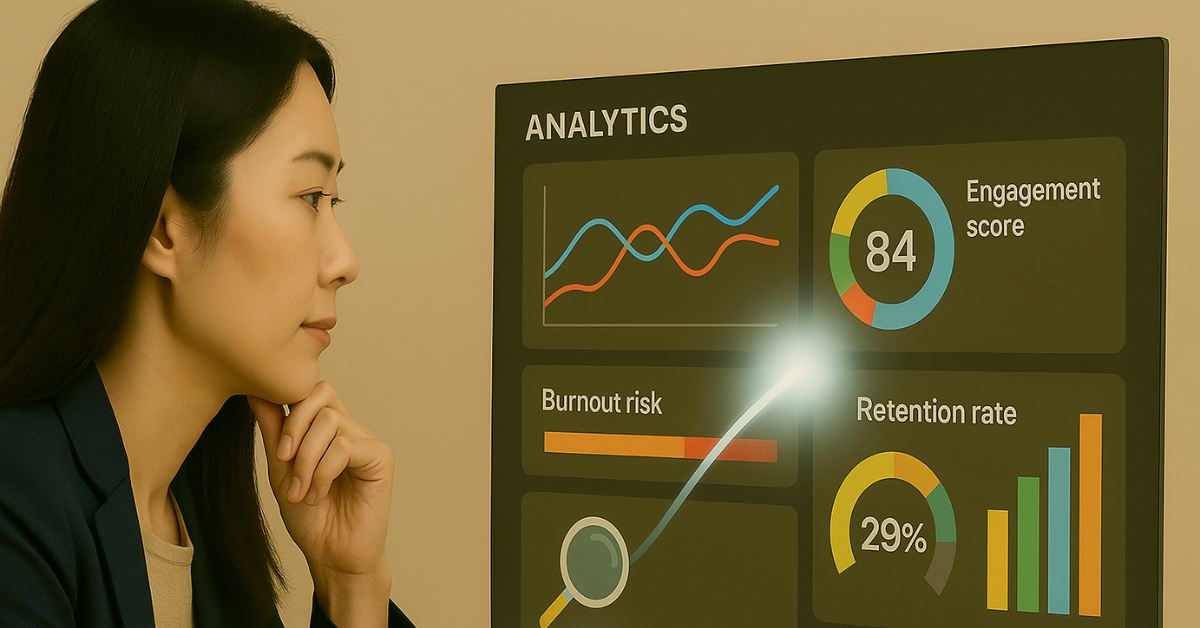From Gut Feel to Data-Driven: How AI Helps Leaders Make Smarter Decisions
Learn how AI analytics tools give leaders sharper insight into team performance—plus practical tips and ethical guardrails for using them well.

Leaders make decisions every day—on hiring, team dynamics, strategy… and occasionally, where to order lunch. And often, they’re flying by feel, not facts.
AI analytics tools have the potential do a little better than a wet finger in the wind. They help leaders move beyond intuition and into insight, by making complex data easier to see, understand, and act on.
What These Tools Do
Platforms like Microsoft Viva Insights, Lattice, and Culture Amp use AI to:
- Track trends in team engagement and sentiment
- Flag potential burnout or retention risks
- Surface hidden patterns in performance data
- Recommend targeted interventions or coaching
Some tools even predict outcomes—like which employees might be flight risks—using historical data such as tenure, performance ratings, promotion history, and real-time signals like engagement surveys or absenteeism trends. IBM, for example, has used AI to predict employee attrition, claiming high accuracy by combining structured HR data with sentiment analysis from internal communications.
While powerful, these tools raise real risks and important ethical considerations—let’s be honest, nobody wants their well-being strategy to come off as Big Brother 2.0. A bit of paranoia is understandable when algorithms start poking around your inbox. You could shut down honest internal communication almost overnight if team members believed AI was secretly reviewing emails and Slack for signs of "negativity." You could actually increase unwanted behaviors, including attrition, if employees found you monitoring their LinkedIn profile for updates that might signal a job hunt.
Leaders should be transparent about what data is being used, ensure privacy safeguards, and never let algorithms dictate decisions without human judgment. Transparency and trust, after all, are the real drivers of good HR metrics and long term organizational value.
What It Looks Like in Practice
Say you lead a large team. The dashboard shows engagement scores dipping in one department. Digging deeper, you notice that project deadlines have been stacking up, and time-off requests have dropped. The AI flags this as a potential burnout hotspot.
Armed with that insight, you sanity-check with the team lead, and explore possible mitigations like adjusting workloads and prioritize a well-being initiative—all with a view to preventing bigger problems down the line.
Why This Matters for New Leaders
For new managers, it can be hard to know where to focus. AI decision-support tools act like an early-warning system, helping leaders catch issues before they escalate—and giving them confidence that their next step is grounded in data, not guesswork.
They also make feedback loops more concrete. Instead of relying only on annual surveys, leaders can track how changes (like adjusting workflows or recognizing top performers) affect team metrics in near real time.
Best Practices for Using AI Analytics Well
- Start simple: Track just a few key metrics at first (like engagement or workload balance) to avoid overwhelm.
- Check context: Data points are clues, not conclusions. Always follow up with conversations.
- Stay human: Use insights to open dialogue, not to micromanage or monitor unfairly.
Final Thought
AI can’t make decisions for you. But it can give you sharper vision—turning blind spots into actionable clarity. For leaders, that’s a game-changer.
About the author:
